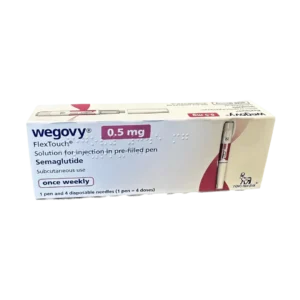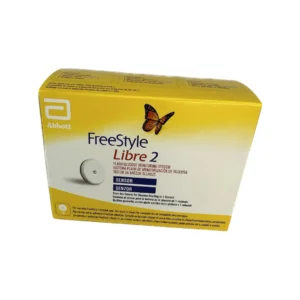Ozempic contains the active substance semaglutide. It helps your body reduce your blood sugar level only when blood sugar is too high and can help prevent heart disease.
Ozempic is used:
• on its own – if your blood sugar is not controlled well enough by diet and exercise alone, and you cannot use metformin (another diabetes medicine) or
• with other medicines for diabetes – when they are not enough to control your blood sugar levels.
These other medicines may include: oral antidiabetics (such as metformin, thiazolidinediones, sulfonylureas, sodium-glucose cotransporter 2 (SGLT2) inhibitor) or insulin.
It is important that you continue with your diet and exercise plan as told by your doctor, pharmacist or nurse.
Do not use Ozempic
• if you are allergic to semaglutide or any of the other ingredients of this medicine.
Warnings and precautions
Talk to your doctor, pharmacist or nurse before using this medicine.
This medicine is not an insulin and should not be used if:
• you have type 1 diabetes – a condition where your body does not produce any insulin
• you develop diabetic ketoacidosis – a complication of diabetes with high blood sugar, breathing difficulty, confusion, excessive thirst, a sweet smell to the breath or a sweet or metallic taste in the mouth.
Ozempic is not an insulin and should therefore not be used as a substitute for insulin.
Effects on the digestive system
During treatment with this medicine, you may feel sick (nausea) or be sick (vomiting), or have diarrhoea. These side effects can cause dehydration (loss of fluids). It is important that you drink plenty of fluids to prevent dehydration. This is especially important if you have kidney problems. Talk to your doctor if you have any questions or concerns.
Children and adolescents
This medicine is not recommended in children and adolescents under 18 years as the safety and efficacy in this age group have not yet been established.
Other medicines and Ozempic
Tell your doctor, pharmacist or nurse if you are taking, have recently taken or might take any other medicines, including herbal medicines or other medicines you bought without a prescription.
In particular, tell your doctor, pharmacist or nurse if you are using medicines containing any of the following:
• Warfarin or other similar medicines taken by mouth to reduce blood clotting (oral anticoagulants). Frequent blood testing to determine the ability of your blood to clot may be required.
• If you are using insulin, your doctor will tell you how to reduce the dose of insulin and will recommend you to monitor your blood sugar more frequently, in order to avoid hyperglycaemia (high blood sugar) and diabetic ketoacidosis (a complication of diabetes that occurs when the body is unable to break down glucose because there is not enough insulin).
Pregnancy and breast-feeding
If you are pregnant or breast-feeding, think you might be pregnant, or are planning to have a baby, ask your doctor for advice before taking this medicine.
This medicine should not be used during pregnancy, as it is not known if it may affect your unborn child. Therefore, it is recommended to use contraception while using this medicine. If you wish to become pregnant, you should stop using this medicine at least two months in advance. If you become pregnant when using this medicine, talk to your doctor right away, as your treatment will need to be changed.
How Ozempic is given
Ozempic is given as an injection under the skin (subcutaneous injection). Do not inject it into a vein or muscle.
• The best places to give the injection are the front of your thighs, the front of your waist (abdomen), or your upper arm.
• Before you use the pen for the first time, your doctor, pharmacist or nurse will show you how to use it.
When to use Ozempic
• You should use this medicine once a week on the same day each week if possible.
• You can give yourself the injection at any time of the day – regardless of meals.
To help you remember to inject this medicine once a week only, it is recommended to note the chosen weekday (e.g. Wednesday) on the carton and to write the date on the carton every time you have injected it.
If necessary you can change the day of your weekly injection of this medicine as long as it has been at least 3 days since your last injection of it. After selecting a new dosing day, continue with once a week dosing.
What Ozempic contains
• The active substance is semaglutide. One ml solution for injection contains 1.34 mg semaglutide. One pre-filled pen contains 4 mg semaglutide in 3 ml solution. Each dose contains 1 mg of semaglutide in 0.74 ml.
• The other ingredients are: disodium phosphate dihydrate, propylene glycol, phenol, water for injections, sodium hydroxide/hydrochloric acid (for pH adjustment). See also section 2, ‘Sodium content’.
Like all medicines, this medicine can cause side effects, although not everybody gets them.
Serious side effects
Common (may affect up to 1 in 10 people)
• complications of diabetic eye disease (retinopathy) – you should inform your doctor if you experience eye problems, such as changes in vision, during treatment with this medicine.
Uncommon (may affect up to 1 in 100 people)
• Inflamed pancreas (acute pancreatitis) which could cause severe pain in the stomach and back which does not go away. You should see a doctor immediately if you experience such symptoms.
Rare (may affect up to 1 in 1 000 people)
• severe allergic reactions (anaphylactic reactions, angioedema). You should seek immediate medical help and inform your doctor straight away if you get symptoms such as breathing problems, swelling of face, lips, tongue and/or throat with difficulty swallowing and a fast heartbeat
Other side effects
Very common (may affect more than 1 in 10 people)
• feeling sick (nausea) – this usually goes away over time
• diarrhoea – this usually goes away over time
Common (may affect up to 1 in 10 people)
• being sick (vomiting)
• low blood sugar (hypoglycaemia) when this medicine is used with another antidiabetic medicine. The warning signs of low blood sugar may come on suddenly. They can include: cold sweat, cool pale skin, headache, fast heartbeat, feeling sick (nausea) or very hungry, changes in vision, feeling sleepy or weak, feeling nervous, anxious or confused, difficulty concentrating or shaking. Low blood sugar is more likely to happen if you also take a sulfonylurea or insulin. Your doctor may reduce your dose of these medicines before you start using this medicine.
• indigestion
• inflamed stomach (‘gastritis’) – the signs include stomach ache, feeling sick (nausea) or being sick (vomiting)
• reflux or heartburn – also called ‘gastro-esophageal reflux disease’ (GERD)
• stomach pain
• bloating of the stomach
• constipation
• burping
• gall stones
• dizziness
• tiredness
• weight loss
• less appetite
• gas (flatulence)
• increase of pancreatic enzymes (such as lipase and amylase).
Uncommon (may affect up to 1 in 100 people)
• change in the way food or drink tastes
• fast pulse
• injection site reactions – such as bruising, pain, irritation, itching and rash.
• allergic reactions like rash, itching or hives.





Reviews
There are no reviews yet.